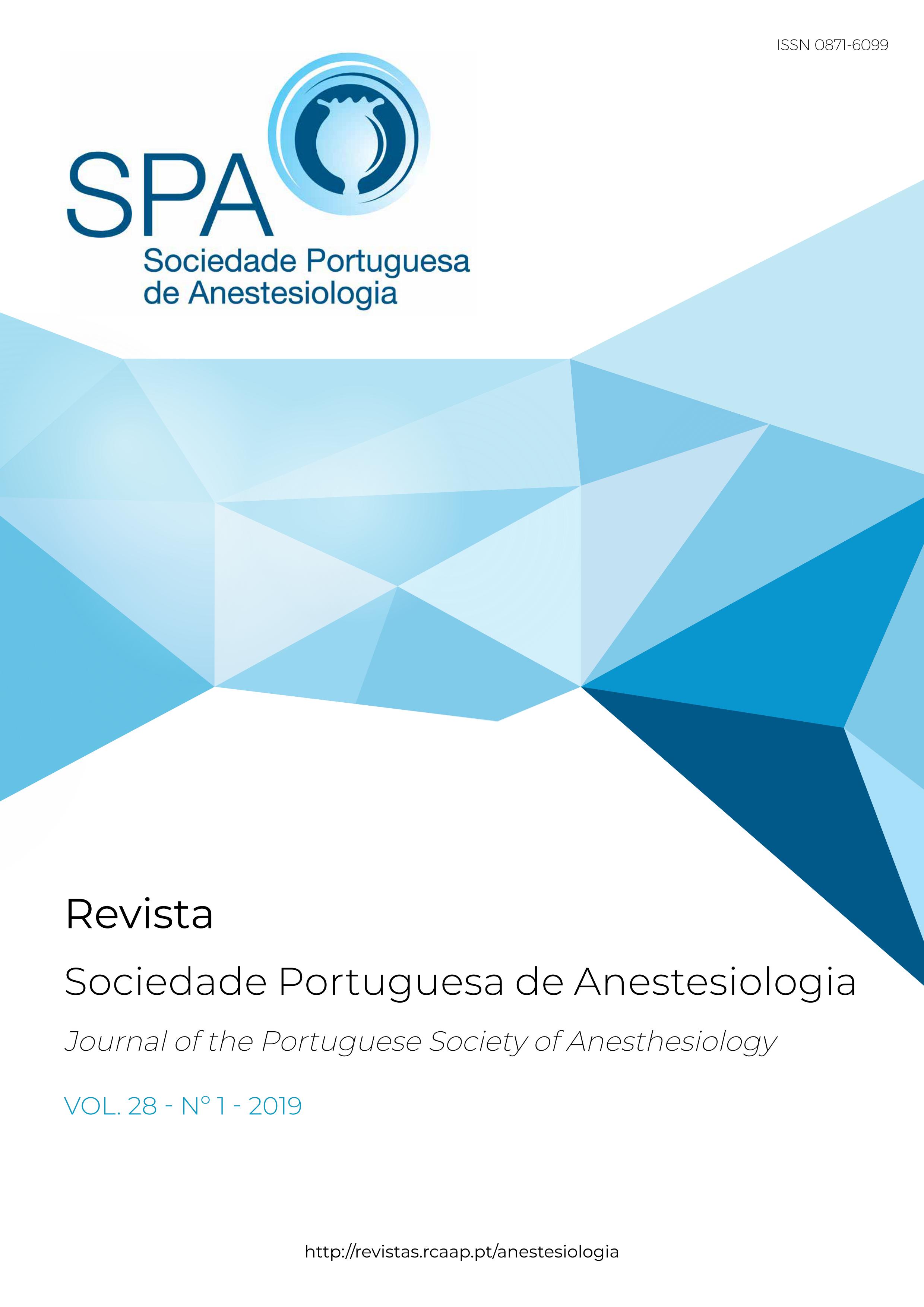Ensino da Via Aérea Avançada a Internos de Especialidade:
Uma Proposta para o Ensino de Intubação Orotraqueal com o Uso de um Fibroscopio Flexível
DOI:
https://doi.org/10.25751/rspa.15811Palavras-chave:
Anestesiologia/ensino; Broncoscopia; Broncoscópios; Ensino/métodos; Intubação Intratraqueal/métodos; Tecnologia de Fibra ÓpticaResumo
O ensino correto de uma técnica é fundamental para garantir a segurança do doente. De acordo com as Practice Guidelines for Management of Difficult Airway da Sociedade Norte Americana de Anestesiologia (American Society of Anesthesiology), deve optar-se por uma intubação vígil com o uso de fibroscopia flexível sempre que se antecipe uma via aérea difícil. Por este motivo, os Internos de Especialidade devem ganhar autonomia no manuseamento correto de um fibroscópio flexível, para que possam abordar uma Via Aérea Difícil de forma segura. Este artigo descreve uma proposta educacional para o ensino avançado da intubação com o uso de fibroscopia flexível a internos de Anestesiologia. A estratégia descrita pode ser usada em vários tipos de hospitais (Centrais/Distritais) com idoneidade formativa. Primeiro, discutir-se-ão algumas teorias
educacionais que serviram de base a esta proposta. Seguidamente, será descrito um processo educacional para facilitar os tutores no ensino desta técnica avançada de manuseamento da via aérea, sem comprometer a segurança do doente.
Downloads
Referências
2. Apfelbaum JL, Hagberg CA, Caplan RA, Blitt CD, Connis RT, Nickinovich DG, et al. Practice guidelines for management of the difficult airway: an updated report by the American Society of Anesthesiologists Task Force on Management of the Difficult Airway. Anesthesiology. 2013;118:251-70. doi: 10.1097/ALN.0b013e31827773b2.
3. Bandura A. Social Learning Theory. New Jersey: Prentice-Hall; 1977.
4. Shute J. Mastery learning and modules. NLN Publ. 1976:32-8.
5. Siddaiah-Subramanya M, Smith S, Lonie J. Mastery learning: how is it helpful? An analytical review. Adv Med Educ Pract. 2017;8:269-75. doi: 10.2147/AMEP. S131638.
6. McGaghie WC, Issenberg SB, Cohen ER, Barsuk JH, Wayne DB. Medical education featuring mastery learning with deliberate practice can lead to better health for individuals and populations. Acad Med. 2011;86:e8-9. doi: 10.1097/ACM.0b013e3182308d37.
7. Guadagnoli M, Morin MP, Dubrowski A. The application of the challenge point framework in medical education. Med Educ. 2012;46:447-53. doi: 10.1111/j.1365-2923.2011.04210.x.
8. Jarus T, Goverover Y. Contextual interference and the aquisition, retention and transfer of a motor skill. Percept Mot Skills. 1999;88:437-47.
9. Battig W. Facilitation and Interference. Bilodeau EA, editor. Aquisition of Skill. New York: Academic Press; 1966. p. 215-44.
10. Cepeda NJ, Pashler H, Vul E, Wixted JT, Rohrer D. Distributed practice in verbal recall tasks: A review and quantitative synthesis. Psychol Bull. 2006;132:354-80.
11. Donovan JJ, Radosevich DJ. A meta-analytic review of the distribution of practice effect: now you see it, now you don’t. J Appl Psychol. 1999;84:795-805.
12. Moulton CA, Dubrowski A, Macrae H, Graham B, Grober E, Reznick R. Teaching surgical skills: what kind of practice makes perfect?: a randomized, controlled trial. Ann Surg 2006;244:400-9. doi: 10.1097/01.sla.0000234808.85789.6a.
13. Motola I, Devine LA, Chung HS, Sullivan JE, Issenberg SB. Simulation in healthcare education: a best evidence practical guide. AMEE Guide No. 82. Med Teach. 2013;35:e1511-30.
14. Dent J, Harden RM. A practical guide for medical teachers. 4th ed. Dundee: Churchill Livingstone; 2013.
15. Young JQ, Van Merrienboer J, Durning S, Ten Cate O. Cognitive Load Theory: implications for medical education: AMEE Guide No. 86. Med Teach. 2014;36:371-84.
16. Reedy GB. Using cognitive load theory to inform simulation design and practice. Clin. SimulNurs. 2015;11:355-60.
17. Ospina O, Medina A, Marulanda M, Buitragoe L. Cumulative Sum learning curves (CUSUM) in basic anaesthesia procedures. Colombian J Anesthesiol. 2014;42:142-53.
18. The “Open it up, line it up” approach for Fiberoptic Intubation. [Accessed 11.10.2017] Available at: http://faculty.washington.edu/pcolley/.)
19. Aggarwal R, Darzi A. Training in the operating theatre: is it safe? Thorax. 2006;61:278-9.
20. Hatala R, Cook DA, Zendejas B, Hamstra SJ, Brydges R. Feedback for simulationbased procedural skills training: a meta-analysis and critical narrative synthesis. Adv Health Sci Educ Theory Pract. 2014;19:251-72. doi: 10.1007/s10459-013-9462-8.
Downloads
Publicado
Como Citar
Edição
Secção
Licença
Os artigos estão livremente disponíveis para serem lidos, descarregados e partilhados a partir do momento da sua publicação.
A RSPA reserva-se o direito de comercialização do artigo enquanto parte integrante da revista (na elaboração de separatas, por exemplo). O autor deverá acompanhar a carta de submissão com a declaração de cedência de direitos de autor para fins comerciais.
Relativamente à utilização por terceiros a Revista da SPA rege-se pelos termos da licença Creative Commons “Atribuição – uso Não-Comercial (CC BY-NC).
Após publicação na RSPA, os autores ficam autorizados a disponibilizar os seus artigos em repositórios das suas instituições de origem, desde que mencionem sempre onde foram publicados.


